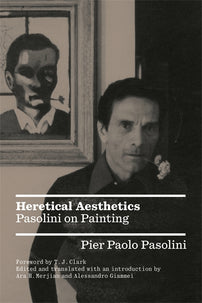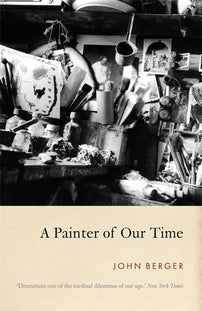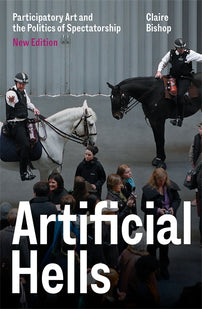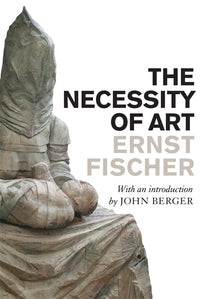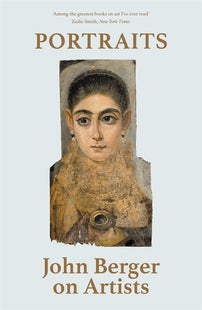Behind Alice Neel’s Marxist Girl
Irene Peslikis is often remembered simply as the subject of Alice Neel's portrait 'Marxist Girl', but as Chris Hayes writes she was also an inspiring artist and activist who played a pivotal role in feminist organising in New York.
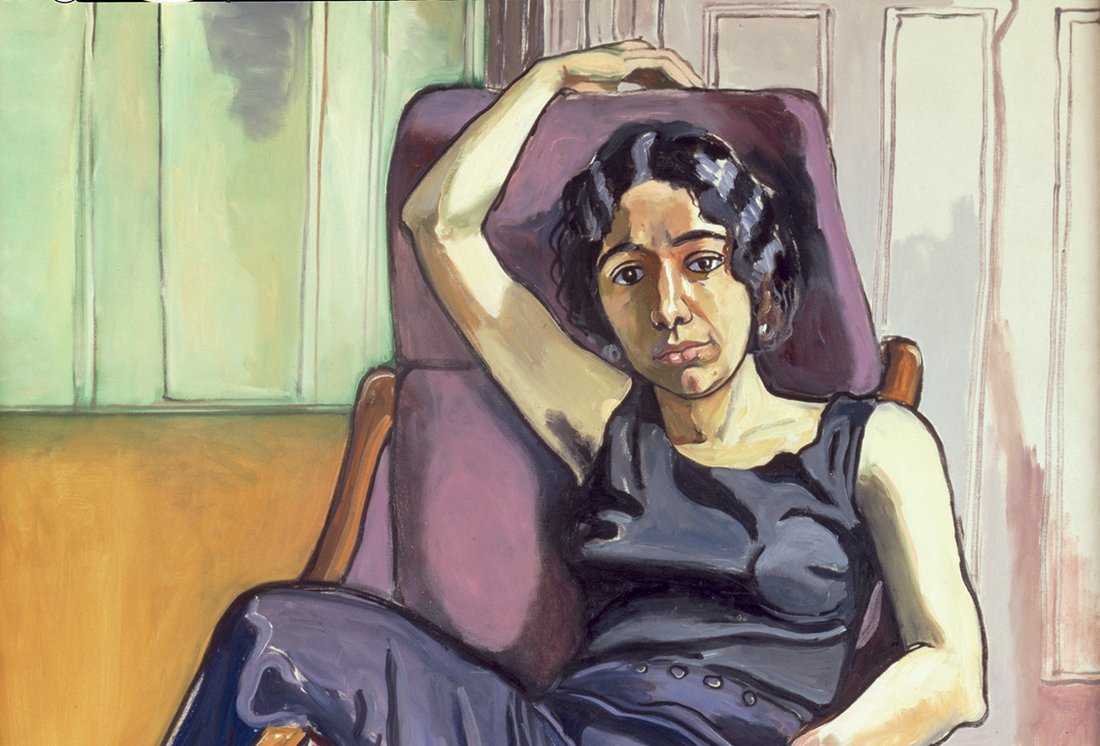
In February 1969, a group of feminist activists stormed a New York state legislative meeting, where 14 men and a woman, a nun, appeared as experts on a legislative committee concerning abortion. These politicians and experts, a flyer prepared for the protest said, would ‘in their usual daddy-knows-best manners’ limit the reproductive rights of women. ‘The only real experts on abortion are women!’ Organised by a left-wing feminist group (so newly formed they didn’t yet have an official name; later, they would become known as Redstockings) the activists were quickly removed by the police, but the commotion drew the attention of journalists. Their demands were clear: repeal, not reform, of abortion restrictions.
Shortly after, in March of that year, the same group reconvened outside Washington Square Methodist Church in New York. In front of a small audience of 300, 12 women and just one man, Nathan Rappaport, a doctor who performed many abortions when it was illegal to do so, described their experiences of trying to access abortion. Across the nation, abortions were banned except in extreme circumstances, such as suicidal ideation. As one speaker stated: ‘You have to go and bring a razor, or whatever: “If you don’t tell me I’m going to have an abortion right now, I’m going to go out and jump off the Verrazzano Bridge.”’
As Susan Brownmiller wrote in The Village Voice, capturing the emphasis on personal experience, this was the ‘politics of confrontation and catharsis’. In the same spirit, the speak out was the culmination of a longer strand of organising by Redstockings and other feminist groups. It was an optimistic and heady time. As Simone de Beauvoir wrote, ‘this new feminism made itself known by means of demonstrations, some of them spectacular, others less so, and by a flood of literature – quantities of articles and books.’ Through small-run print zines and closed-knit consciousness raising groups, huge efforts were put into collecting and sharing women’s experiences, finding solidarity on the edge of societal taboo.

You may already have seen one of the organisers, Irene Peslikis, who designed the original leaflet and introduced the speakers during the event, but you’re less likely to know her name. If she is remembered today, it is often not for her activism or even her own art, but for a painting of her by another.
‘Marxist Girl’, a portrait of Peslikis by the artist Alice Neel, was recently shown at the Barbican in London, following a tour which began in The Metropolitan Museum of Art, New York, before crossing to the Guggenheim Museum in Bilbao, then to Pompidou, Paris. Yet even before these blockbuster shows, the painting had for years featured in promotional material for Neel, and continues to circulate ad hoc across social media, typically without any reference to the life of the subject.
[book-strip index="1"]
Born on 7 October 1943, Peslikis became a pivotal figure within the second-wave feminist art scene. Growing up in a Greek American family in Queens, she was connected with working class life in New York city and remained a committed activist until she died in 2002. Throughout her life, she worked as an artist, educator and activist, often blurring the lines between the roles.
It takes time to list all the organisations she either founded or was pivotal to. There’s New York Studio School for Drawing, Painting and Sculpture, one of the first feminist cooperative galleries. There’s NoHo gallery. She was also a founding member of Redstockings. She taught one of the first university courses on women and art in the USA, at the State University of New York at Old Westbury. She drew political cartoons for the feminist movement, often taking on quippy feminist lines, such as a 1969 cartoon which read: ‘Women must control the means of reproduction.’

Education would continue to be a defining aspect of her life. In a formal capacity, she taught at many different art schools throughout her career, including City College of New York, the College of Staten Island, the College of New Rochelle and Ramapo College. She would also found the New York Feminist Art Institute, a full-time feminist art education programme which ran from 1979 to 1990 which often encouraged students to make art based on their experiences discussed during consciousness-raising classes.

She ‘loved encouraging beginning artists,’ said Anne Forer, an old friend from New York Radical Women, ‘because she loved art and the experience of doing art – she wanted everyone who wanted it to have it too.’ But she embraced education in more expansive ways too.
As an early member of New York Radical Women, she helped disrupt the 1968 Miss America pageant with a banner that read ‘Women’s Liberation’. Her 1969 text ‘Resistance to Consciousness’ detailed some of the common objections or obstacles to consciousness-raising. And she followed other socialists like Shulamith Firestone and Ellen Willis in founding Redstockings, becoming so heavily involved that her loft on East Broadway became an informal HQ for much of their organising. For Peslikis, the sense of purpose was strong: ‘I knew I was part of making history.’

 Peslikis’ portrait also reflects the trajectory of Neel’s career. While Neel’s work was shaped by different movements that emerged during her life, it is her involvement with the 70s feminist movement that prompted the most noticeable shift. The first half of her career was largely situated within an explicitly socialist tradition of painting. Some of these early portraits were of prominent American communists, but often she painted crowds: groups of people at protests, witnessing police brutality, or on union marches. Throngs of people disappear into the horizon or flow through the streets. Whether it’s her encounters with Depression-era labour militancy, or her life in Havana, and later in New York’s Greenwich Village and Spanish Harlem, the stages in her work often map on to where she lived, and more particularly, the people she was neighbours with. Against wider artistic trends towards abstraction, she remained steadfast, painting the people and events around here: police attacking protestors, anti-nazi marches, families in poverty and radicals.
Peslikis’ portrait also reflects the trajectory of Neel’s career. While Neel’s work was shaped by different movements that emerged during her life, it is her involvement with the 70s feminist movement that prompted the most noticeable shift. The first half of her career was largely situated within an explicitly socialist tradition of painting. Some of these early portraits were of prominent American communists, but often she painted crowds: groups of people at protests, witnessing police brutality, or on union marches. Throngs of people disappear into the horizon or flow through the streets. Whether it’s her encounters with Depression-era labour militancy, or her life in Havana, and later in New York’s Greenwich Village and Spanish Harlem, the stages in her work often map on to where she lived, and more particularly, the people she was neighbours with. Against wider artistic trends towards abstraction, she remained steadfast, painting the people and events around here: police attacking protestors, anti-nazi marches, families in poverty and radicals.
In the latter half of her life, she mainly painted portraits, mostly of well-known figures. Echoing the activism of the civil rights movement, as well as emerging feminist movement and the queer community, a great emphasis was placed on the identity of individuals. Poignant examples include a painting of a Black man drafted into the Vietnam war, a portrait never finished as he didn’t return. There are gay and multiracial couples. Andy Warhol and a number of his superstars sit for her. Jackie Curtis appears in drag. And while a number of portraits concern influential activists and academics, there are almost no protests. For Neel, this was less a shift than a continuation of the politics that had driven her through her life (‘One plus one plus one is a crowd’, she famously told Philip Rahv). Yet, for many communists, the focus on individuals – particularly celebrity figures – was a betrayal.
In many ways, the relationship between Peslikis and Neel is more reciprocal than it might seem. They were introduced through the feminist journal Women & Art, co-founded by Peslikis with Pat Mainardi. Women & Art would publish two texts on Alice Neel’s work in their first issue, playing an important role along with other feminist critics in advancing her reputation, and Neel herself would later write for the journal.
Where Neel had an ambivalent relationship with the wider feminist movement, Peslikis would remain involved throughout her life. As the movement continued to gain momentum, she took on a significant stature. On 3 March 1989, the 20th anniversary of the Redstockings' Abortion Speakout, Peslikis recalled her original testimony. At 19 years old, and then still a student at Pratt, she had had an abortion. She was a real starving artist, she joked, living on candy bars but loving every minute of what she was doing. She was also the first in her family to go to university. Getting pregnant then, she knew it was the ‘wrong time, wrong place.’ Why should she have to throw away her education because of one mistake? She was desperate but clear-sighted. Despite the social taboo and legal restrictions, she would find someone, she had to.
[book-strip index="2"]
Looking back years later, especially as she now wanted a child of her own, she was confident she made the right decision: ‘It was absolutely the right decision, and every woman needs to have the absolute right to control our bodies at any stage of the pregnancy – not just the limits set by Roe vs Wade.’
Peslikis was there, on the ground and behind the scenes, during some of the most iconic moments of feminist organising in New York. Her reputation and influence stretched beyond the city: a 1979 issue of UK-based feminist magazine Spare Rib ran her name on the cover alongside the likes of Susan Sontag, Marge Piercy and Anita Steckel. And Peslikis’ flyer, ‘who are the experts?’, from 1969, would continue to hold sway with later generations. In 1999, it was clearly visible in clippings from the University of Florida’s newspaper at an abortion rights vigil.


How accurate is Neel’s title? Identifying Peslikis’ politics requires us to grasp the nuances of the relationship between socialism and feminism – one that grew and shifted through the course of her life. With Redstockings, Peslikis was certainly to the left of many more mainstream feminist groups. Yet the group itself also stood apart from many other socialist feminists. In their writing, they decry ‘politico feminism’ which sees gender politics as a mere subset of class politics. On this point, the meeting of Neel and Peslikis is a fascinating overlap – perhaps even clash.
Neel’s relationship with feminism was often ambiguous. Her portraits captured some of the leading lights of twentieth century history: Alice Childress, Mother Bloor, Charlotte Moorman and Adrienne Rich. When the women she painted were less well known, their lives often spoke to issues of motherhood, domestic violence and family life – long before the second-wave feminists were on the scene. This is why, historian Denise Bauer argues, ‘Neel joined other women artists of her generation, like Louise Nevelson and Louise Bourgeois, in being touted as role models’ by younger activists. She was generous with her time and energy in response, enthusiastically offering support and regularly appearing as a speaker at colleges and on panels. Nancy Azara, co-founder of the Feminist Art Institute in New York City, ‘remembered Neel as always available to support feminist art education programs.’
Debates about the politics of representation echoed throughout the Left in the 20th century, heightened by a burgeoning emphasis on civil rights and feminism. Neel would remain a committed communist: she was the first living artist to receive a retrospective in the Soviet Union and she kept a portrait of Lenin in her kitchen. She was, in the words of the critic John Perreault, a ‘jolly Stalinist to the end.’ While it’s true that her career gained visibility as feminism was on the ascendancy in the 1970s, she was often critical of the women’s movement. She rejected the idea of a ‘feminine sensibility’ in art, which was then a common point of debate, and was critical of other feminist art, such as Judy Chicago’s The Dinner Party ‘for its valorization of female genitalia,’ Bauer explains. A year before painting Peslikis, she wrote in the communist journal the Daily World: ‘Women's real liberation cannot occur without some change in the social organization… Property relations which reduce everything to the status of “things” and “objects” have also reduced women to the status of 'sexual objects.’

It was a split within Women & Art which prompted Neel to paint Peslikis. Peslikis, along with the other more left-wing editors, wanted to publish an insert of male writers. Others disagreed, arguing the journal should exclusively publish women. Neel, in response to the split, reached out to Peslikis and the others, yet only Peslikis could make the sitting. ‘We need radicals,’ Neel said, to explain her motivation behind the piece, and the painting itself has been interpreted as a portrait reflective of the attitudes and debates of the moment.
Peslikis’s pose is confident, nonchalant. She sits in a plush chair, her right leg stretched over one arm rest, and her arm on the same side cocked upwards. Her expression is stern, if not a little unamused. Stare a little longer, and you might notice her unshaven armpit. ‘Rather than wearing a dress, stockings, and a carefully arranged hairdo,’ Bauer has written, ‘Peslikis is without make-up, her hair is tousled, and she is clad in jeans and a tank top, donning the "women's liberationist" look of the period.’ The painting suggests the stance and appearance of a serious-minded radical. Historian Pamela Allara, on the other hand, reads the image with a different point of emphasis. While she agrees the portrait is a ‘picture of 70s feminism in unisex garb, lack of make-up, and an expansive, masculine pose’ she argues the ‘demeaning title of Marxist Girl rather than "feminist woman"’ is a reflection of Neels’ ambivalence about the movement.

In 1973, Peslikis playfully subverted these labels in her own photography. Two polaroids, with the phrase ‘Portrait of the Artist as a Marxist / Feminist’ scrawled underneath, depict herself in two distinct guises. On the left, literally and metaphorically, she is shown wearing a comical Marx-like beard with several weighty books under her arm. On the right, she poses dramatically as an artist in the studio, a cigarette held in her hand and gazing dramatically off into the distance, a fake pair of breasts over her shirt. The date comes just one year after Neel’s portrait, echoing the title of the painting.
The photographs were shared by Kathie Sarachild after Peslikis’ death in 2002 in a letter to Peslikis’ mother. ‘I think of her as I always found her in her wonderful loft in Westbeth, a vibrant spirit, surrounded by her exciting canvases, large and small, her sparkling work that she managed to continue doing despite her afflictions.’ The photograph captured a sense of that lively time: ‘Irene's "Portrait of the Artist as a Marxist Feminist" conveys some of the fun, and irreverent spirit of these times.’
[book-strip index="3"]

